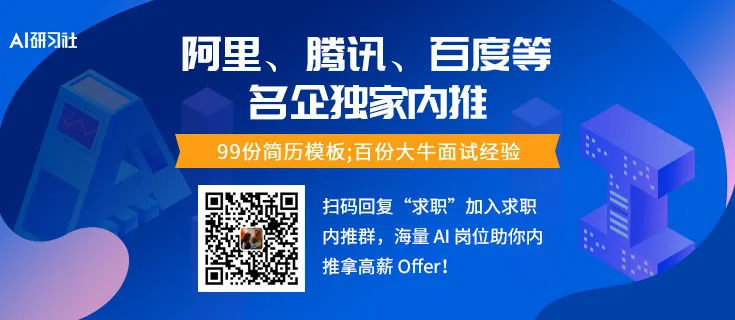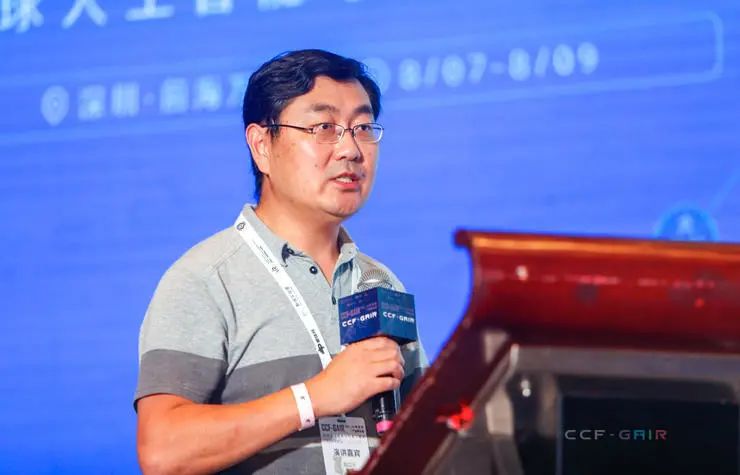
Author | Wang Gang
According to Lei Feng Network: On August 7, 2020, the Global Artificial Intelligence and Robotics Summit (CCF-GAIR 2020) officially opened. The CCF-GAIR 2020 summit is hosted by the China Computer Federation (CCF) and co-organized by Lei Feng Network and The Chinese University of Hong Kong, Shenzhen, with support from Pengcheng Laboratory and Shenzhen Artificial Intelligence and Robotics Research Institute.
Since the integration of academia and industry in 2016, the industrial landing in 2017, the vertical segmentation in 2018, and the 40th anniversary of artificial intelligence in 2019, the summit has been committed to building the largest, highest standard, and most cross-disciplinary academic, industrial, and investment platform in the field of artificial intelligence and robotics in China.
At the Industrial Internet Special Session on August 9, Liu Jiangchuan, an academician of the Canadian Academy of Engineering, IEEE Fellow, and professor at Simon Fraser University in Canada, delivered an opening keynote speech titled Edge Computing from the Perspective of Energy Internet.
Academician Liu Jiangchuan has long been engaged in academia, starting research at the Hong Kong University of Science and Technology, The Chinese University of Hong Kong, and Simon Fraser University in Canada since 1999, with support from various parties, including the Canadian Natural Sciences and Engineering Research Council and the Canadian Department of Industry.
Since 2018, he has entered the industrial sector, founding Jiangxing Intelligent, supported by Sequoia Capital, Songhe Capital, and Baidu Ventures.
He mentioned that the industrial internet is advancing rapidly. Today’s internet does not only connect; it has transformed into a distributed data processor and distributed data collector, integrating underlying communication, upper-layer storage, upper-layer applications, and computation. This is a significant transformation.
“It is not just about connectivity, but about expanding storage and applications within it. Besides industry, the energy sector, transportation sector, smart cities, etc., are also similar scenarios.”
He pointed out that the consumer internet’s habitual thinking involves building high-reliability and high-performance infrastructure, even if these devices consume a lot of electricity. However, the electricity cost can be offset by the value of applications, such as acquiring massive amounts of data from a vast number of clients without restrictions, where privacy is not a major issue, and digital value is realized.
However, this mindset, which succeeded in the consumer internet era, faces severe challenges in the industrial and energy internet eras. This is because most projects in the industrial and energy internet span the entire country, and electricity supply is not only about the demands of large and medium cities; other places cannot guarantee 100% uninterrupted power supply. Over the past 100 years, the development of battery energy and storage density has been linear, and growth has basically reached its limit.
“We have now reached a stage where ensuring the stable operation of large power grids is extremely important.”
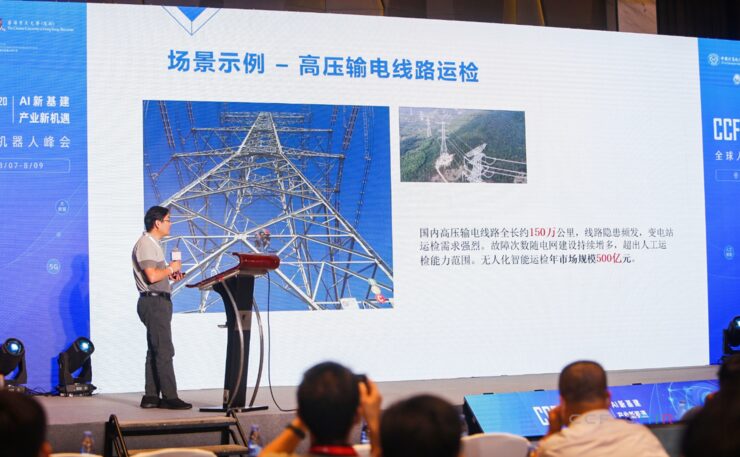
Additionally, he expressed an important viewpoint: for the energy internet, it cannot rely on traditional cloud computing methods used in consumer internet scenarios. Instead, it must solve problems at the user side and data site while significantly saving bandwidth and working in a no-network situation—this is where the necessity of edge computing becomes evident.
In his subsequent speech, Academician Liu Jiangchuan elaborated on what edge computing means in the context of industrial internet and energy internet, as well as the solutions they are currently implementing to address the challenges.
The following is a transcript of Academician Liu Jiangchuan’s speech, edited and organized by Lei Feng Network without altering the original meaning.
I am honored to accept the invitation from CCF-GAIR to present a report on Edge Computing from the Perspective of Energy Internet, discussing the opportunities, challenges, and solutions we have encountered during this period.
I have long worked in academia, starting research at the Hong Kong University of Science and Technology, The Chinese University of Hong Kong, and Simon Fraser University in Canada since 1999, with support from various parties, including the Canadian Natural Sciences and Engineering Research Council and the Canadian Department of Industry. Since 2018, I have also entered the industrial sector, founding Jiangxing Intelligent, supported by Sequoia Capital, Songhe Capital, and Baidu Ventures.
The industrial internet is an emerging concept that includes industry, energy, transportation, smart cities, etc., and is currently advancing rapidly. The end of this period is industrial sensors, and what we need to do is truly bring industrial applications into the internet world to promote industrial applications through the internet.
I have experienced these periods and am now moving towards the path of industrial internet. The so-called industrial internet is not just about connectivity; today’s internet is no longer just about connectivity. Today’s internet has become a distributed data processor and distributed data collector.
Here, we see the integration of underlying communication, upper-layer storage, upper-layer applications, and computation, which is a significant transformation. It is not just about connectivity; it is about expanding storage and applications within it. Besides industry, the energy sector, transportation sector, smart cities, etc., are also similar scenarios.
Since entering this era in 2016, we have faced significant challenges. From the consumer internet to the industrial internet and energy internet scenarios, we see some habitual thinking from the consumer internet era, which believes that high-reliability and high-performance infrastructure has been established over the past decade. For instance, working for long periods without interruption, having backup power supplies in case of outages, which consume a lot of electricity, and this electricity can be offset by the value of applications.
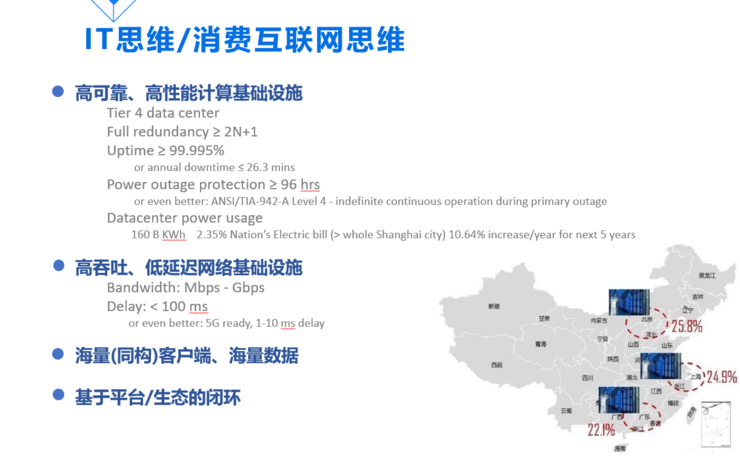
On the other hand, the network infrastructure is also very excellent, with high throughput and low latency network infrastructure now reaching Gbps. With 5G, latency can be reduced to around 10 milliseconds or even 1 millisecond.
On massive client bases, vast amounts of data can be acquired without restrictions, where privacy is not a major issue, and digital value is realized. This is the habitual thinking of the consumer internet era.
These thoughts were valid and very successful applications in the consumer internet era. However, in the era of industrial internet and energy internet, we actually face numerous challenges.
Because the consumer internet has been applied in cities, especially in major urban centers, the industrial internet and energy internet span the entire country, so the infrastructure has some issues. Although electricity supply is not a problem in large and medium cities, there are still power outages due to various reasons throughout the year, and it cannot guarantee 100% long-term power supply.
From the perspective of energy supply, batteries are also a significant issue. Over the past 100 years, battery development has been linear, with energy and storage density basically reaching linearity. From the first lithium battery patent in the 1970s to now, growth has reached its limit.
From a network perspective, large and medium cities feel that they are already covered, but for industrial internet or energy internet, many of your devices are in remote areas, in deserts, and 3G, 4G, or even 5G networks may not be ideal, and true network coverage may not improve by 1% in terms of land area; this is a typical challenge.
Take the example of China’s high-voltage line operation and inspection. The current high-voltage lines span 1.5 million kilometers, and ultra-high voltage is world-leading. We have now reached a stage where ensuring the stable operation of large power grids is extremely important, which is also very important aside from construction. The demand for operation and inspection continues to increase, requiring drone inspections.
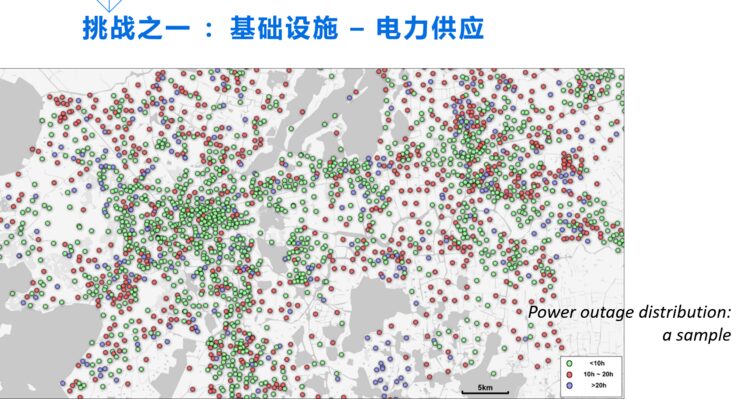
Realizing 24-hour monitoring of power grids is fundamentally different from urban security monitoring. The vast number of iron towers are located in deep mountains and deserts, with large temperature differences and high electromagnetic interference, and the network is very weak, unlike cities with excellent 3G, 4G, and 5G networks, which can solve problems by transmitting data back to the cloud like in the consumer internet. In the energy internet, there may be signals, but it is challenging to achieve full coverage and high-speed video transmission.
Energy supply is also an issue; you might think that the iron tower does not lack power, but in reality, it has no electricity, so it requires solar power, which poses a significant challenge for energy consumption.
For example, the standards set by the State Grid for channel visualization devices require that they operate under minimum illumination, with the whole machine’s peak power not exceeding 8 watts, but still needing to implement artificial intelligence applications. Anyone who has worked with artificial intelligence knows where the challenges lie.
Therefore, for the energy internet, you cannot rely on traditional cloud computing methods used in consumer internet scenarios; instead, it is necessary to solve these problems at the user side and data site to achieve real-time applications while significantly saving bandwidth and working in a no-network situation.
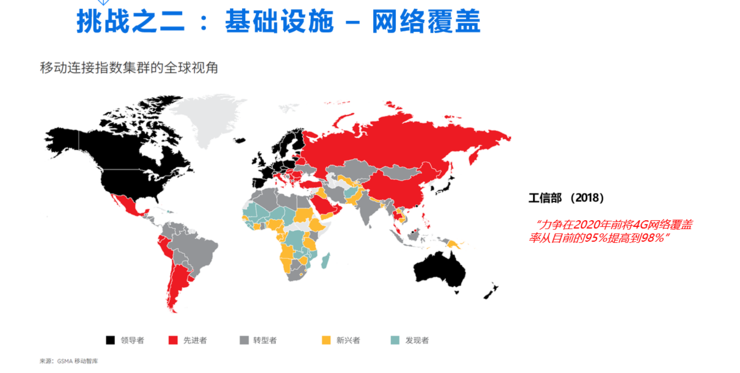
Embedded systems also face significant challenges. In software, with the development of artificial intelligence, the hope is to quickly replace algorithms. How to solve this contradiction, including sensors that are not only visual sensors but also need to introduce temperature sensors, partial discharge sensors, etc., brings various challenges.
In this case, we can see the necessity of introducing edge computing. Edge computing refers to an open platform that integrates core capabilities such as network, computation, storage, and applications close to the data source to provide services nearby. This is particularly important for low energy consumption requirements, especially for real-time business and security privacy considerations.
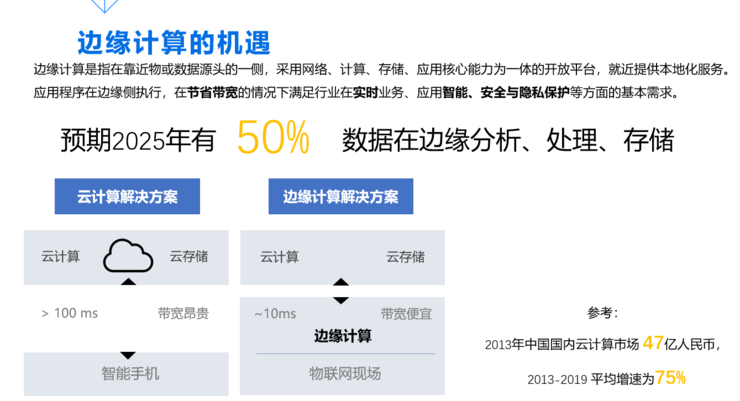
By 2025, it is expected that 50% of data will be analyzed and stored at the edge. Referencing the domestic cloud computing market, in 2013, it was less than 5 billion RMB, with an average growth rate of over 70% in the past years, so edge computing will also undergo this process.
It should be noted that by 2020, the total number of IoT devices is around 50 billion, which is a very rapid growth rate. With such a large number, intelligentization, low latency, and local networking are needed, using edge technology as a complementary technology to cloud computing or as a technology for the second half of cloud computing to jointly meet the requirements of industrial internet and smart internet.
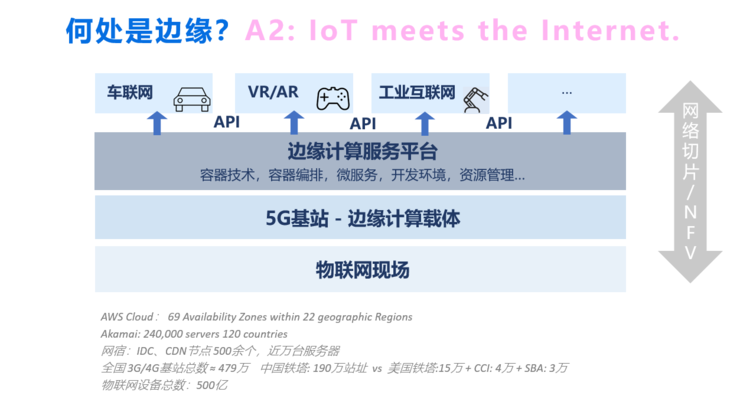
Overall, it is a more stable, real-time, economical, and secure solution, which can be regarded as cloud computing 2.0, achieving millisecond-level response under weak networks and weak power conditions, significantly saving bandwidth costs, and protecting user privacy.
This is the background for the emergence of edge computing. In fact, we can see that although everyone talks about edge computing, the concept of edge computing still has many layers, and everyone’s definitions may not be the same.
In terms of horizontal platforms, including cloud platforms providing services, chip manufacturers working on this, and AI capabilities, there are various different scenarios at the upper level, while at the lower level, there are industrial internet transmission protocols, intelligent chips, and sensors, etc.
Where exactly is the edge? This is a fundamental question, and you will get different answers, all of which have some reason. From the perspective of the link, from the end to the cloud is not just one point but several points, and these several points may all become edges, and these points cooperate with each other to form the ecosystem of edge computing.
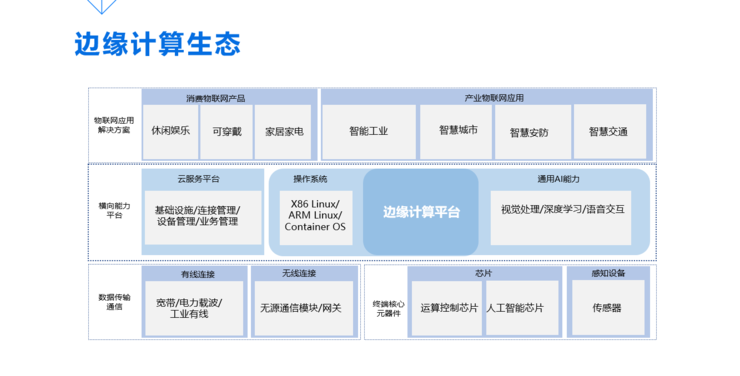
A typical definition of Edge is also natural. From an academic perspective, it is the concept of a coverage network. The most commonly applied concept of a coverage network is the sinking of cloud computing or the computing empowerment of CDN.
From this perspective, let’s look at Amazon’s distributed data center AWS Cloud, which has 65 Availability Zones within 22 Geographic Regions globally. Akamai, the largest CDN provider, has 240,000 servers distributed across 120 countries.
In this case, there will be distributed deployments at the city level, with hundreds, thousands, or tens of thousands globally or nationally. Latency is generally around 100 milliseconds.
Applications for consumer internet are feasible, and cloud gaming applications are also feasible. However, if lower latency can be achieved, we can see the second scenario, where Edge is IoT and the internet. A typical scenario for this definition is mobile edge computing, using 5G base stations as carriers for edge computing, providing industrial sites through network slicing technology.
We can see that the number of base stations for 3G and 4G in China is close to 5 million, and 5G may reach 10 million. Such latency is much lower than that of distributed data centers, basically achieving 50 milliseconds of latency.
However, there is a challenge here; the power consumption of 5G is already very high, and adding computing will increase it even more because the power consumption of computing is on top of communication. On the other hand, once disaster strikes, such as tornadoes or typhoons, causing power outages in the power grid and base stations, should you prioritize communication or base stations? In this case, load migration is also a significant challenge.
Another important point is that in the first two aspects, the thinking is still cloud computing. The so-called sinking of cloud computing or ultimately sinking to the 5G base station involves how to provide enterprise services and how to truly implement originally abstract enterprise applications on the ground, which still presents a significant challenge. This further leads to what we consider Edge, which is OT meets IT.
This is the edge node closest to the industrial site, divided into three levels, with distributed data centers forming the overall edge computing. At this point, what we need to do is create edge computing solutions with high software compatibility, reliability, and scalability aimed at general industrial scenarios, achieving real-time performance, security, low power consumption, and adaptability to weak networks.
From the industry perspective, the State Grid’s energy internet strategy has undergone significant changes. The shape of the power grid has shifted from a construction cycle to a maintenance cycle, with significant pressure for safe operation. The power grid operation also encounters many bottlenecks and challenges, especially with changes in internet economy, digital economy, and social economic forms.
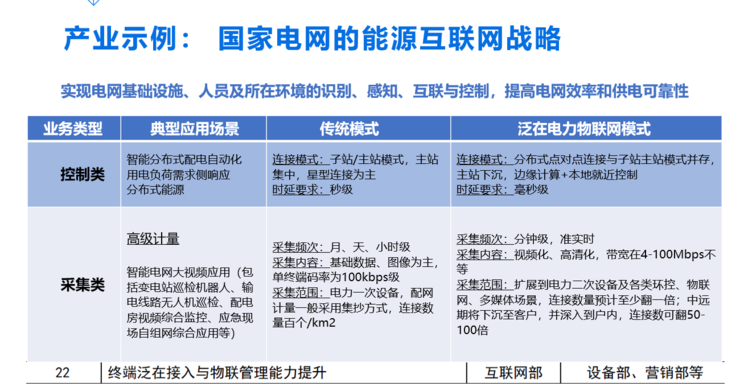
From the perspective of the State Grid, this year, the concept of energy internet of things has been proposed, using internet technology to promote the development of energy technology. It can be seen that the number of devices connected to the State Grid system is about 540 million this year, but it is expected to reach about 3 billion devices by 2030, transitioning from traditional spontaneous systems to future proactive systems, greatly utilizing electronic devices to construct interconnected systems for electric energy flow and intelligent transmission.
There will be various control and collection demands, and the connection model will increasingly approach that of the internet, but the latency requirement is millisecond-level, which must be achieved through edge computing on-site, with similar demands for collection.

From the perspective of the State Grid, edge computing will have some representative applications, such as predictive maintenance, online detection of insulation of capacitive devices, image recognition of disconnect switch status, etc. These all require very high latency, and it is challenging to solve with traditional cloud transmission solutions.
Furthermore, privacy and data volume requirements are also very high, along with security monitoring, tower channel visualization, substation monitoring, improvement of work efficiency, and intelligent operation and maintenance of energy storage devices, all of which require the involvement of edge computing.
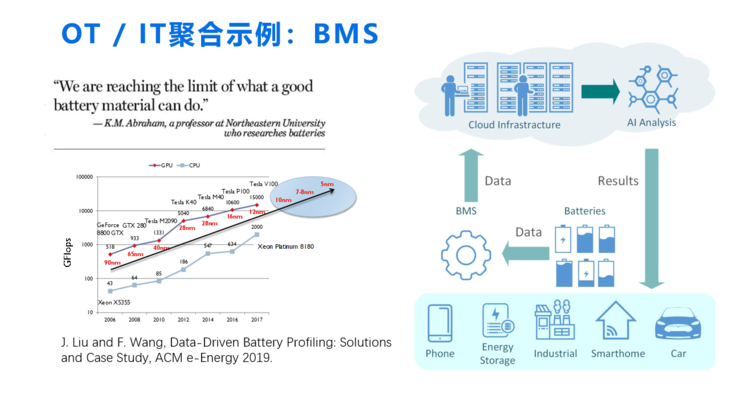
Of course, the requirements for real-time performance and edge characteristics are very high; for instance, location protection requires 10-15 milliseconds. On this basis, further development of other types of applications can be achieved, such as batteries, coordinating with the cloud on the BMS system, and integrating energy controllers for orderly services to achieve the operation and maintenance of energy storage devices, electric vehicle data analysis and aggregation, and to realize the cascade utilization of batteries.
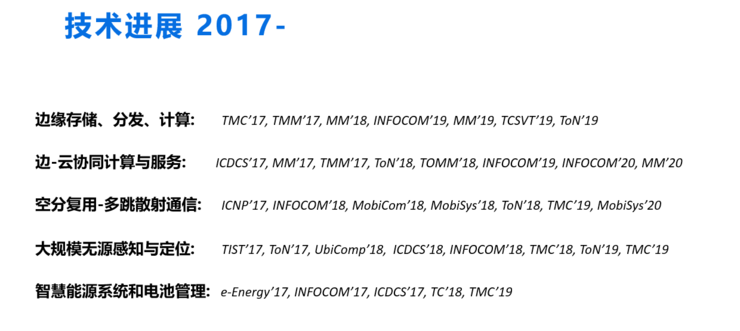
In this area, we can see that there are very many application scenarios. In recent years, related research has been ongoing for over a decade, and in the past few years, significant work has been done in IoT and edge computing, including edge computing storage, distributed computing, edge-cloud collaborative computing, and service space division and reuse, large-scale passive sensing and positioning, smart energy systems, and battery management.
On one hand, it involves the non-connection and communication from IoT nodes to edge computing nodes. In the future, edge nodes should be the first or closest nodes with power supply. Going forward, sensors ideally should not require battery supply because battery energy is limited and brings many problems.
For example, pollution issues arise; if all devices rely on battery support, it is unimaginable how to provide energy for over 500 billion to 1 trillion devices and sensors. From the sensor to the first energy supply point of the edge node, you should create passive communication, especially scattering communication.
We have made a series of works, including significant improvements in transmission rates published in ACM Mobisys 2018. We also achieved multi-hop transmission, greatly enhancing transmission distance and avoiding obstacles.
This was published in ACM Mobisys 2018. At this year’s ACM Mobisys, we also demonstrated the world’s first distributed signal motivation, rather than relying solely on a single source for motivation, which further enhances transmission rates and distances while still allowing for data collection and communication.
We collect energy from the surrounding environment rather than relying solely on batteries and motivating energy. The surrounding environment includes WiFi signals and sound signals, and we have achieved the ability to meet computational capabilities and transmission energy from street environment noise. This is our work in this area.
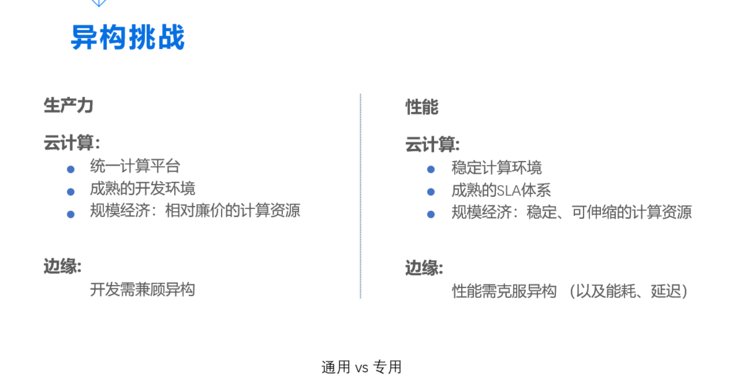
On the other hand, what does the computing platform for edge computing engines look like? Compared to cloud computing, cloud computing has a unified computing platform that needs to consider heterogeneity, while edge sides also need to address heterogeneity.
In terms of performance, cloud computing provides a stable computing environment and stable resources, but on the edge side, it also needs to overcome heterogeneity. Overall, you need to consider generality while also accommodating numerous specialized needs in industrial and energy scenarios.
Investment in IoT applications is very large, and with the increase in IoT, investments are super-linear. In terms of computing architecture OS, the industrial internet and energy internet face over ten times the complexity, with industrial protocols reaching over 100 times the complexity, and in DevOps, exceeding 100 times. The fragmentation of business scenarios can even reach over 1000 times the complexity.
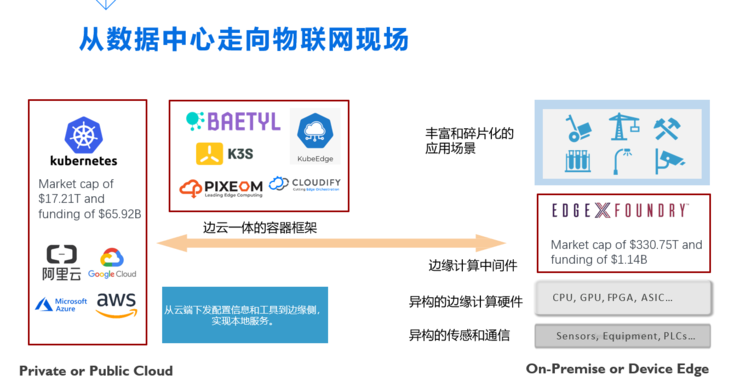
In this area, everyone has different technical routes. On one hand, there is the sinking from data centers, issuing configuration information from the cloud to achieve local services, which is essentially the route of cloud computing vendors and CDN vendors.
On the other hand, directly facing the industrial site, as mentioned earlier, is the scenario of combining OT and IT, requiring middleware for edge computing to cope with edge computing hardware, sensing, and communication.
EdgeX Foundry under the Linux Foundation has completed deployments from IoT terminals, network edges, and terminal servers, solving key business challenges for OT and IT integration, especially establishing an operational framework that decouples sensors, ultimately achieving cloud-edge collaboration and intelligent applications and device and data access. We are optimistic about the development of EdgeX Foundry.
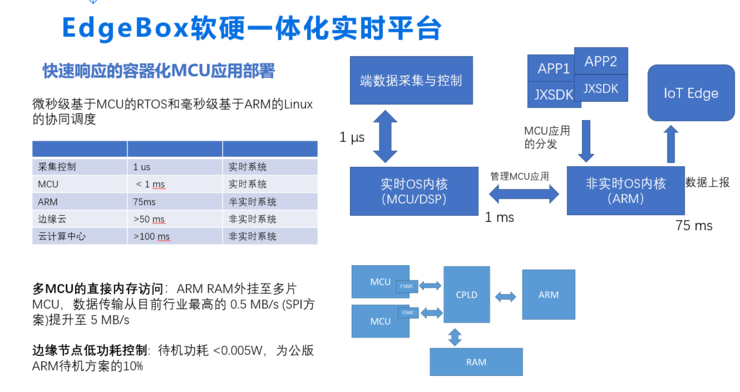
On this basis, Jiangxing Intelligent has developed Edgebox, a practical implementation of EdgeX. We have our own edge computing hardware, integrated chips, and power management systems, achieving extremely low energy consumption and high real-time performance and stability.
On the other hand, we have fully containerized NPU, CPU, and MCU, and implemented various edge intelligent services tailored to specific scenarios. Below, we can accommodate various devices and sensors, creating specific industrial products, and above, achieving cloud neutrality and cloud docking, as well as edge collaboration and collaboration among various edge nodes.
Additionally, we have established a relatively complete edge IoT computing software environment and connection solutions for OT devices, achieving broad compatibility and enterprise-level supporting services.
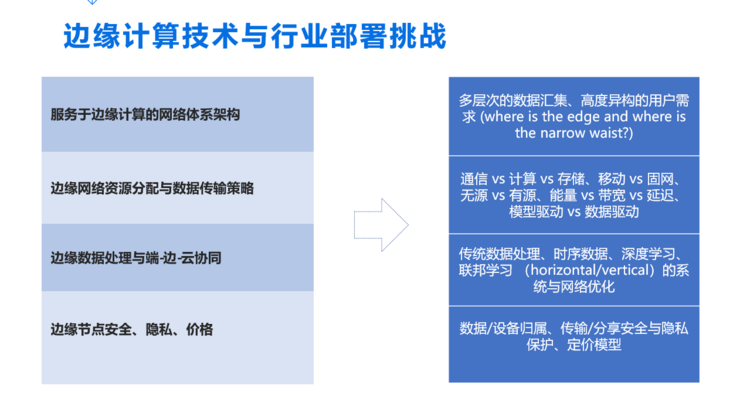
In the next stage of development, the combination of edge computing technology and industry still faces many challenges. Here, a simple summary can be made: on one hand, everyone needs to consider the network architecture serving cloud-edge, especially multi-level data aggregation and highly heterogeneous user needs.
Additionally, edge network resource allocation and data transmission strategies, including how communication and computation, storage are integrated, and how mobile and fixed networks are combined, as well as how energy, bandwidth, and latency are combined. In edge data processing and collaboration among end-edge-cloud, traditional data processing, time-series data, deep learning, and federated learning systems and network optimization.
Security and privacy issues at the edge node, data and device ownership, transmission, sharing security, and privacy are also continuously being resolved, and we are constantly working hard on this.
Thank you all.

Previous Recommendations
